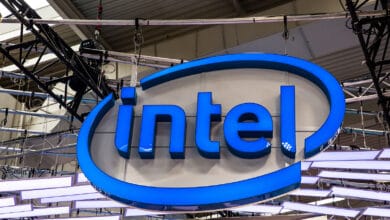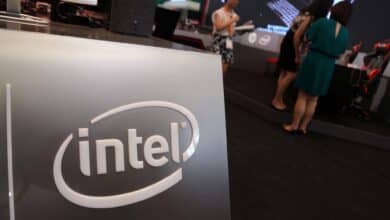
According to a presentation by Intel ahead of Computex 2019, the upcoming Ice Lake Generation AMD processors from the APU family beat AMD not only in CPU but also in GPU performance. Thanks to the new 10 nanometer architecture, the higher performance is possible with the same TDP according to the information published by Intel.
During the presentation of the Ice Lake generation Intel used two new generation processors with 15 Watt and 25 Watt TDP, whose technical details and names were not mentioned. The Intel Whiskey-Lake processor Core i7 8565U (15 Watt TDP) and an AMD Ryzen 7 3700U (25 Watt TDP) served as comparison. The GT2 graphics unit of the Ice Lake processors has 64 EUs, the predecessor had only 24 EUs active.
The Ice Lake processors could use 8 GB LPDDR4X-3733 RAM during the benchmarks, the Whiskey Lake processor had 16 GB DDR4-2400 available and the competitor product of AMD was equipped with 8 GB DDR4-2400 RAM. Intel also did not reveal whether dual or single-channel configurations were used. Intel has also not mentioned whether the Ice Lake processors really use the maximum possible memory clock of 3.733 MHz. With Ryzen CPU and the Intel Whiskey Lake, however, the built-in DDR4-2400 memory is standard.
DX12 with VRS support
The remarkable performance compared to the previous generation and AMD’s competitor product is largely achieved through the VRS support provided in DirectX 12. So far only Nvidia Turing Chips could use this technology. Intel has thus managed to outperform the actually faster AMD Picasso onboard graphics cards.
There are no independent benchmarks yet. Since the performance of the integrated graphics unit depends heavily on the RAM installed and this is often the weak point, the results of the Intel presentation should therefore be taken with caution. A different RAM equipment could also lead to significantly different test results here. Really relevant statements about performance can therefore only be made once the processors have been examined by independent experts.
Furthermore, Intel showed during the presentation that a mobile Core i3 of the Ice Lake generation can even beat the desktop version of the Ryzen 7 in some benchmarks. According to Intel, this should show the customer that when purchasing a processor, decisions cannot be made blindly based on clock rate and the number of cores, without also considering the architecture responsible for the processor’s performance. Intel probably wants to make sure that inexperienced users don’t set the soon-to-be-released Ryzen 9 processors to the same performance level as the Intel Core i9 processors, of which Intel has also introduced a new Special Edition.



